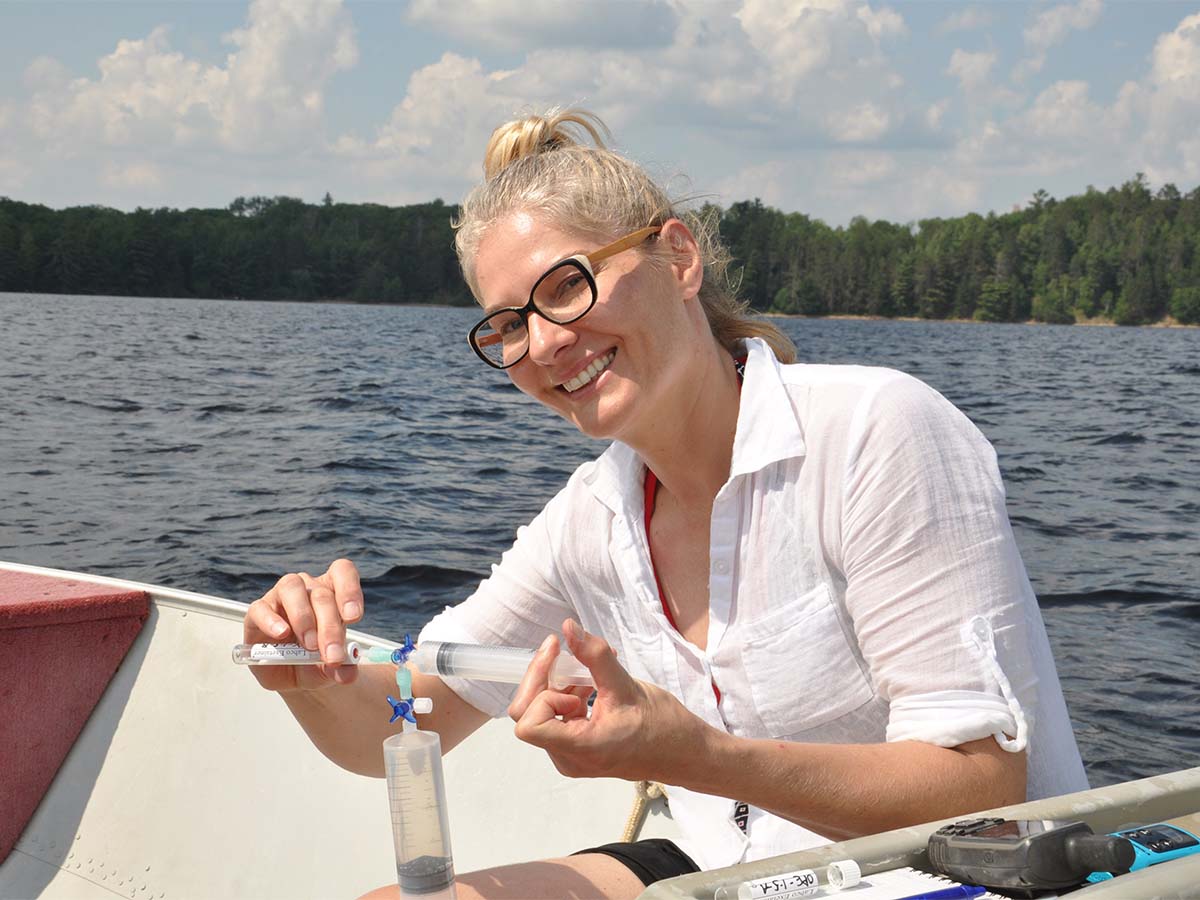Sounds of Science: Assessing and Addressing Impact of Human Pressures on Ontario’s Shorelines

Using specially adapted recording equipment, spatial ecologist Stephanie Melles will capture underwater soundscapes of the Trent-Severn Waterway as part of a collaborative study addressing the increasing human pressures on Ontario’s shorelines.
Melles, a professor in the Department of Chemistry and Biology, is a co-investigator on a two-year, $533,600 grant through the Natural Sciences and Engineering Research Council of Canada’s Alliance Missions program (external link) . She will collaborate with lead researchers from Carleton University, and co-investors at University of Ontario Institute of Technology and University of Ottawa.
With the COVID-19 pandemic driving people to spend more time outdoors and at their cottages, aquatic ecosystems in Ontario are facing increased pressures. The team will investigate these shoreline changes while proposing actionable recommendations to protect them, exploring the issue through three different research strands: biology, engineering, and human dimensions.
Melles will be exploring soundscapes through sonograms taken with a hydrophone, a microphone adapted for use in the water which can capture high frequency and even ultrasonic sounds. The research will measure the impacts of weed removal techniques and boat wakes (the wave a boat creates as it displaces water) on the aquatic biodiversity of the Trent-Severn Waterway. This is a novel use of the recording technology, which has only been used previously for terrestrial applications such as tracking bats.
“Ultrasonic recorders have not been used before to look at freshwater ecosystems,” said Melles, noting that the equipment was funded by a Faculty of Science Research Tools and Instrumentation Grant. “The idea is to create an index of biodiversity based on sound wave size spectra using the sonogram. It’s like capturing how many high frequency noises and how many low frequency noises we’re hearing.”
As invasive aquatic weeds increase in number along the shores, they are affecting underwater biodiversity. Melles’ contribution to the research will take sonograms before and after weed removals, analyzing how the ecosystem changes through sound, as well as comparing the different effects of manual and mechanical weeding techniques. Impacts of boat wakes on the underwater ecosystem will also be captured through sonograms.
In addition to examining impacts of human overuse, the collaboration offers Melles the opportunity to assess what kinds of ultrasonic sounds may be made by underwater species and if they can be detected – for example, on land, some insects make high buzzing noises. Is it the same below the water’s surface?
As Melles asked, “Are the aquatic invertebrates making those high frequency sounds?”
Melles will collaborate with the associated research teams on findings for the project over the next two years.
Learn more from the University of Carleton about this collaborative project. (external link)